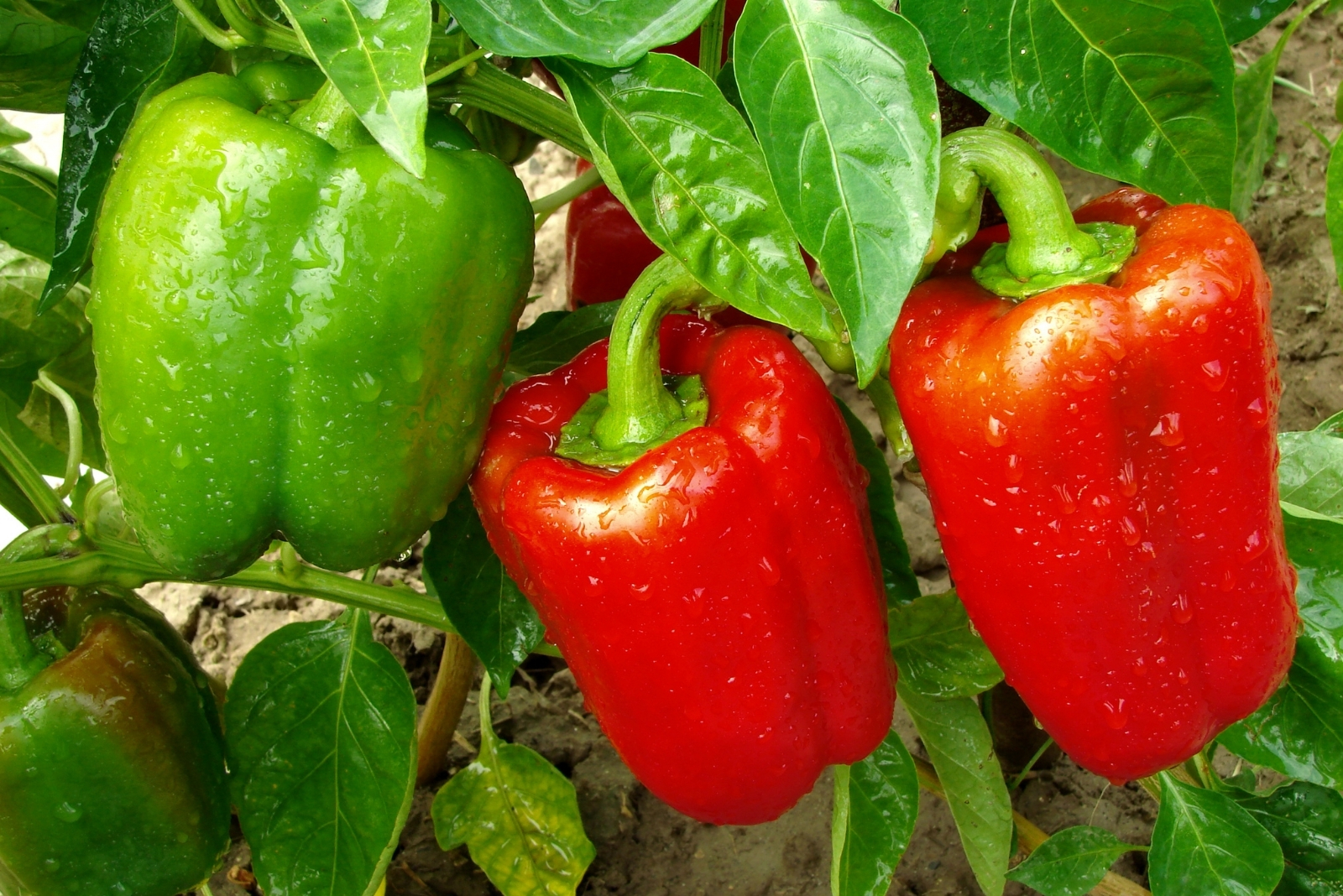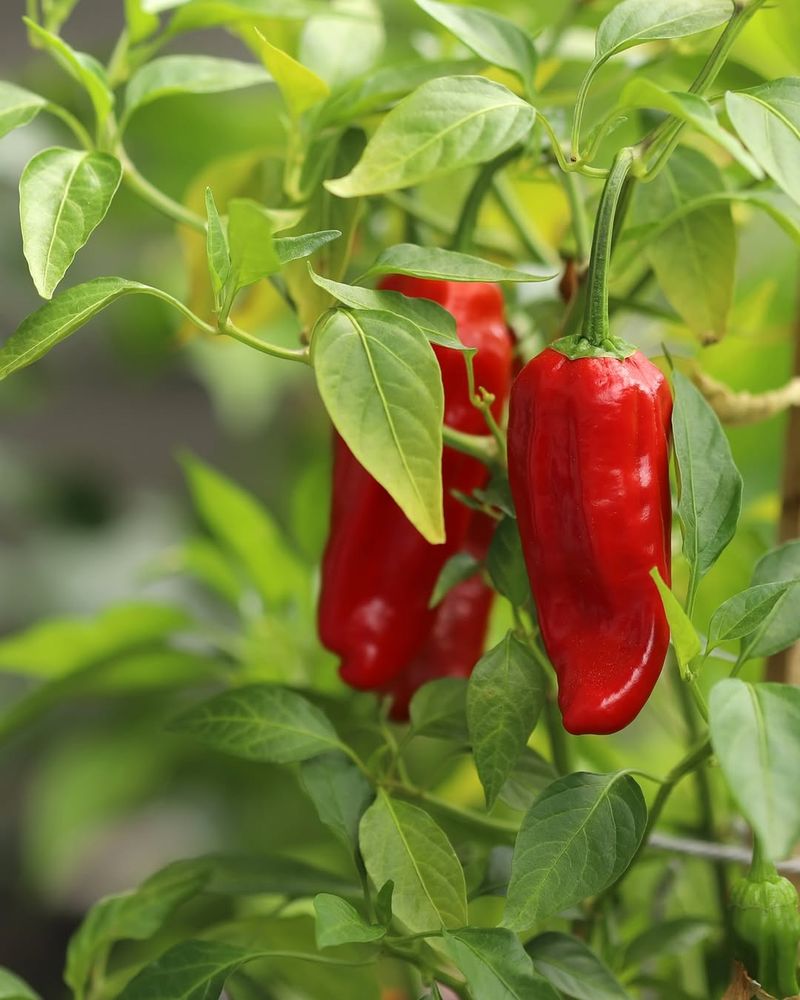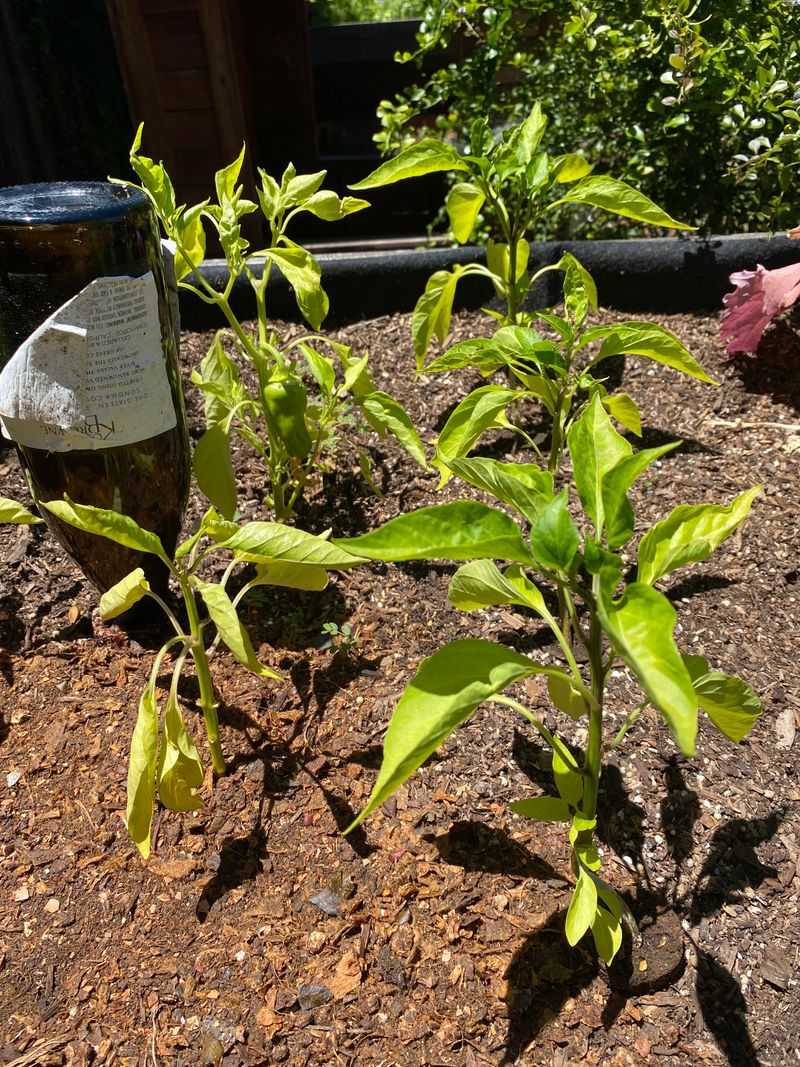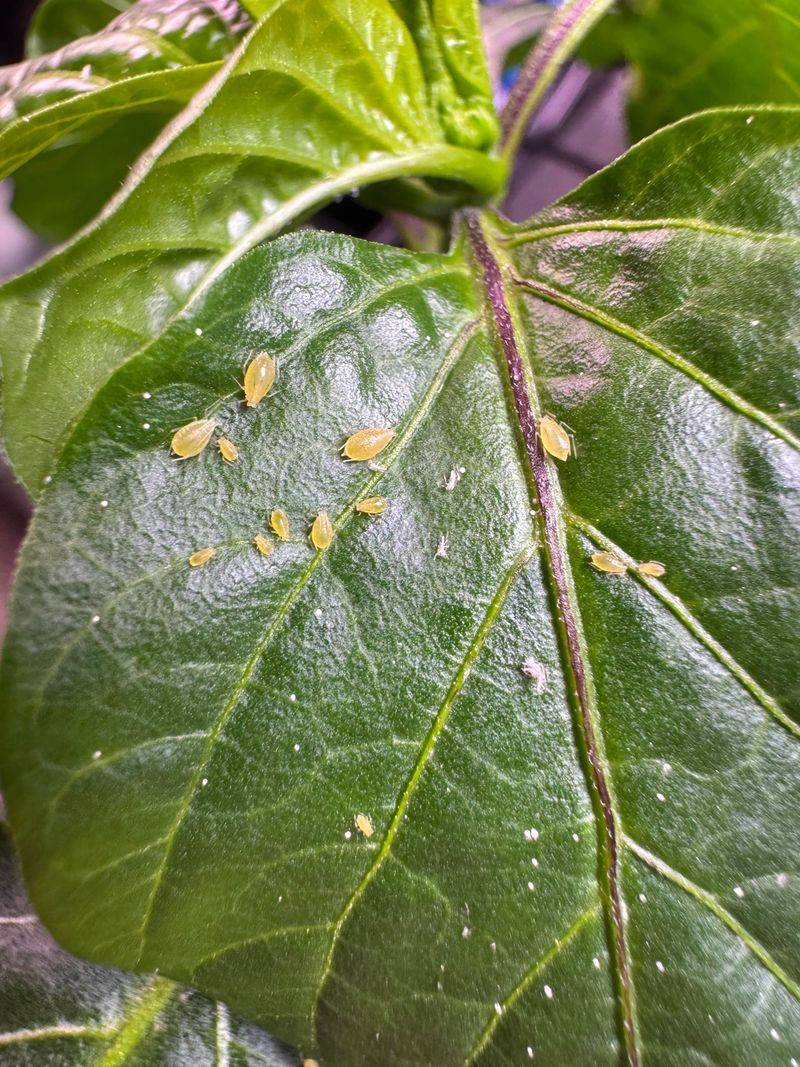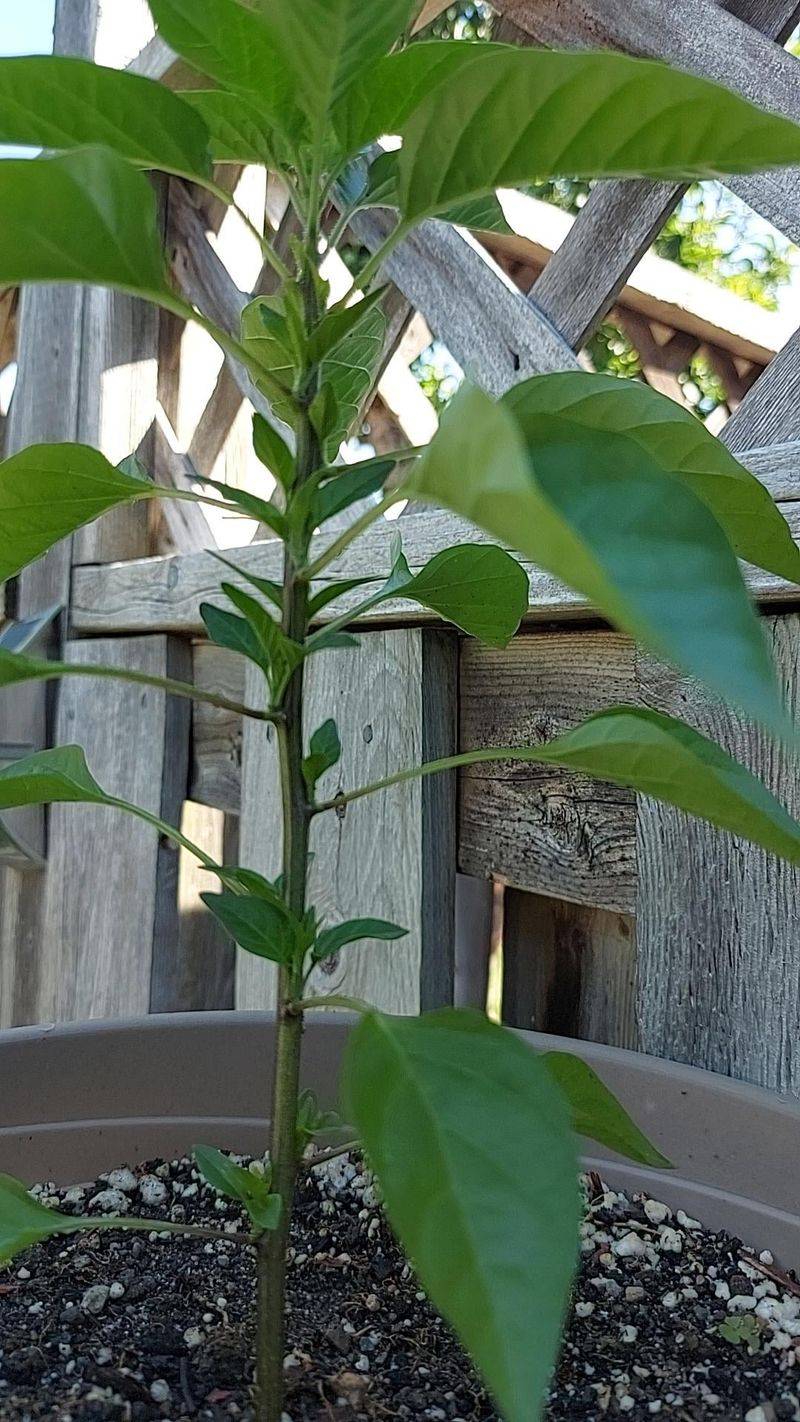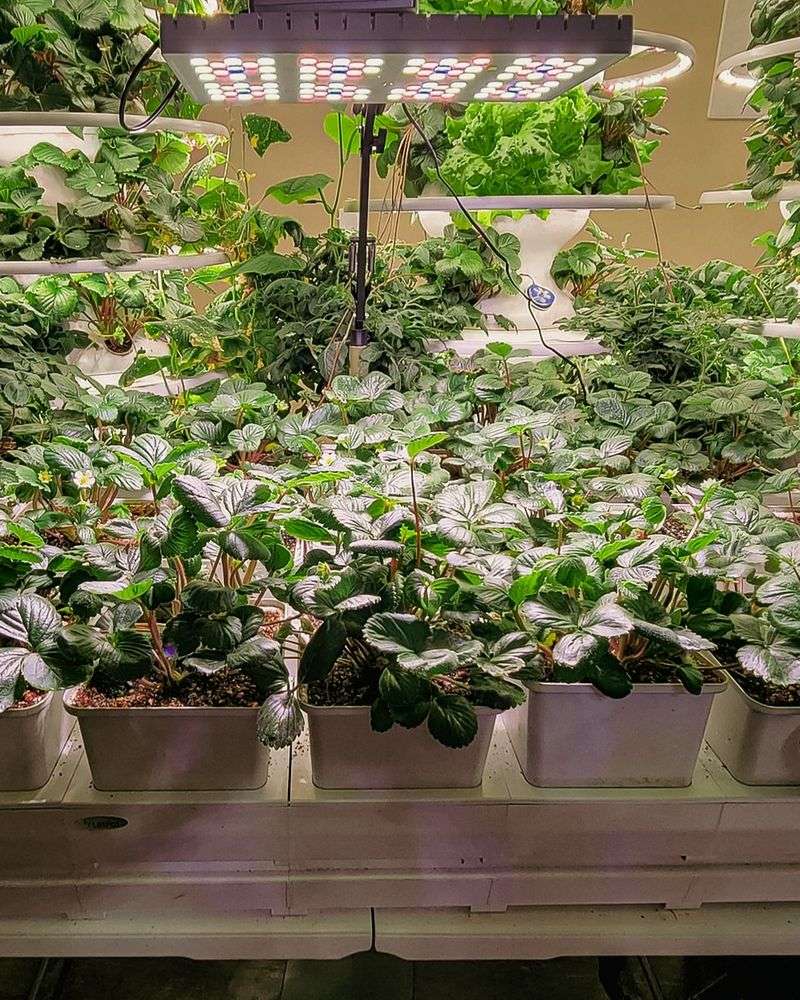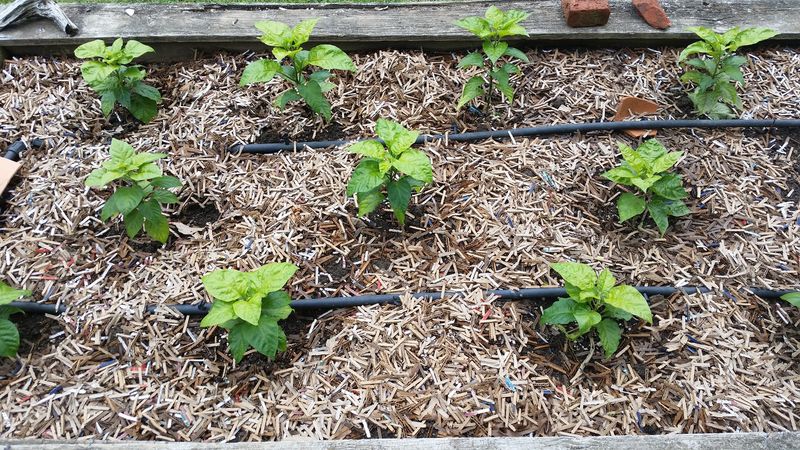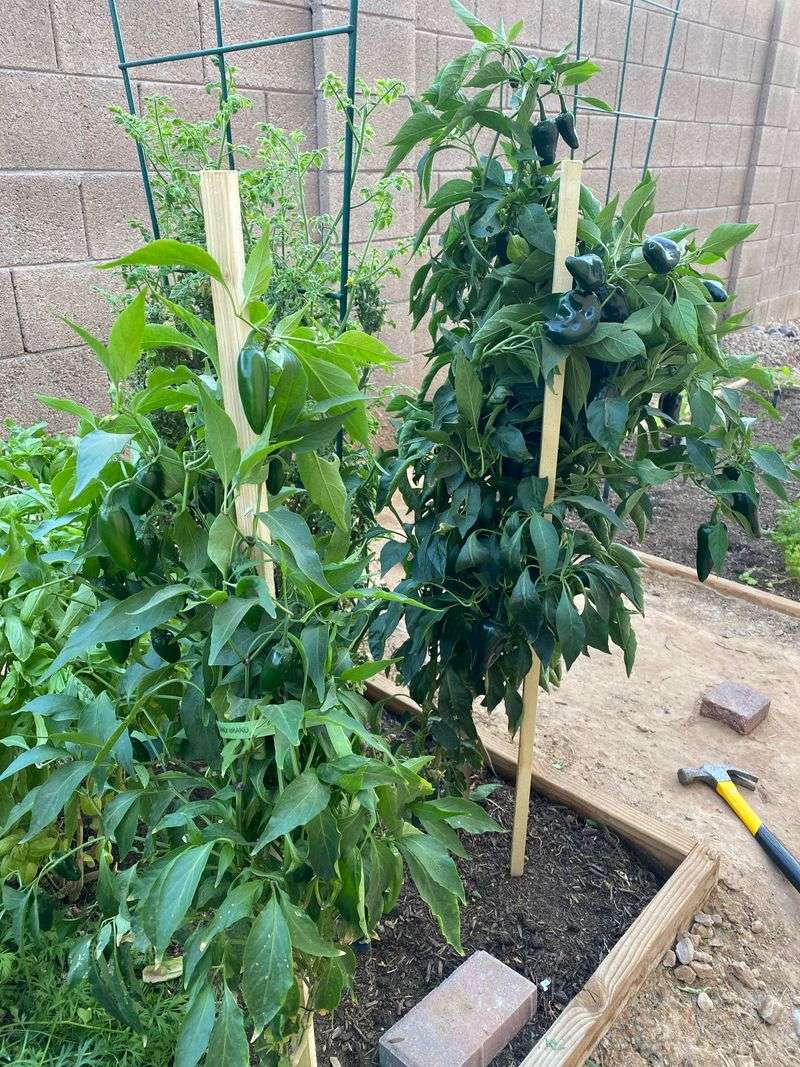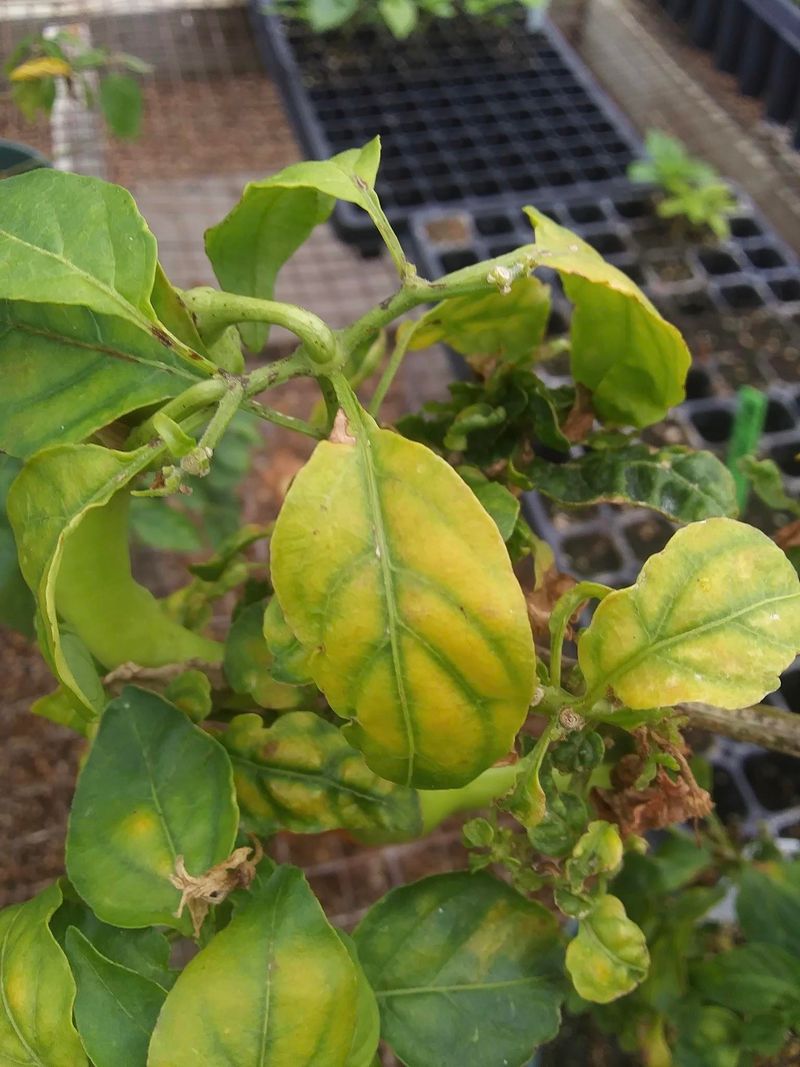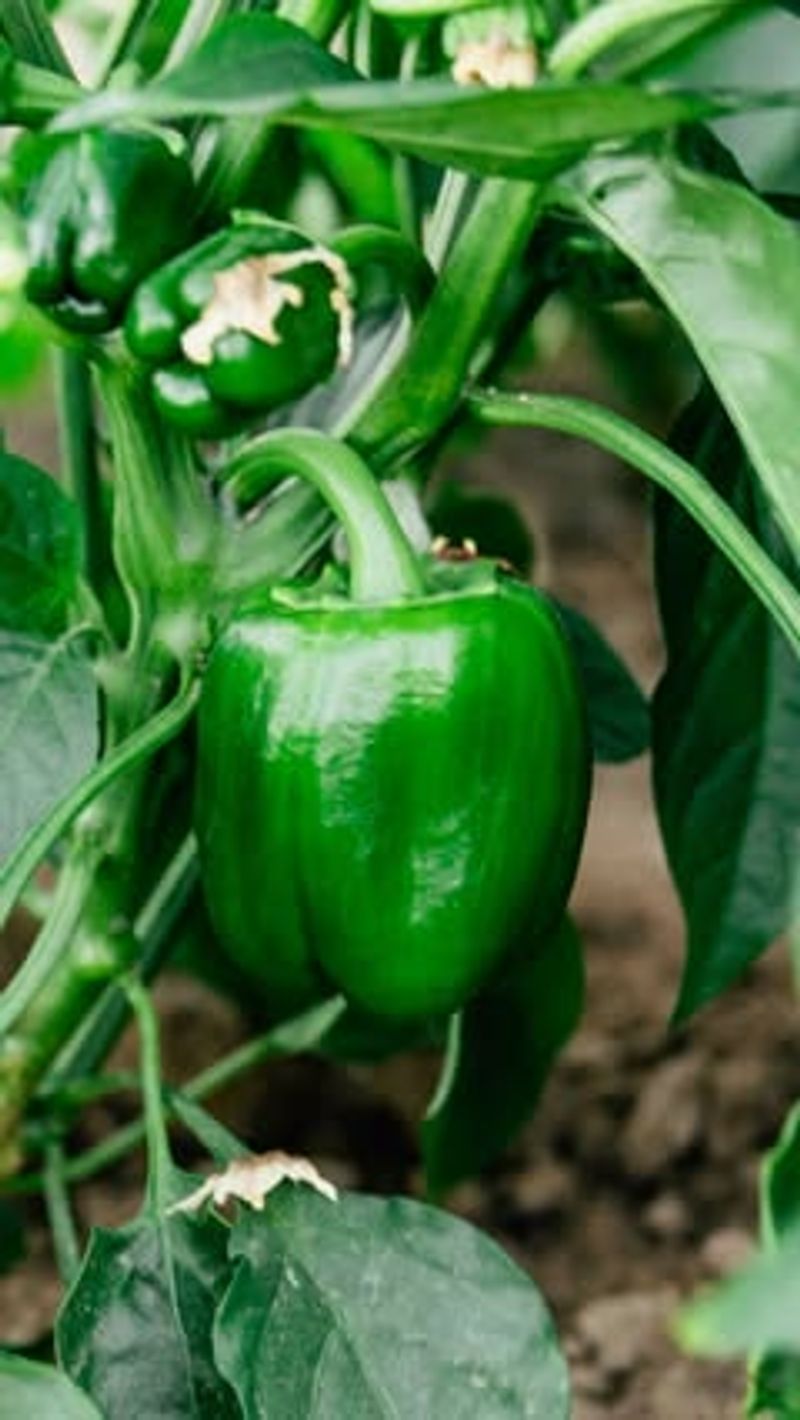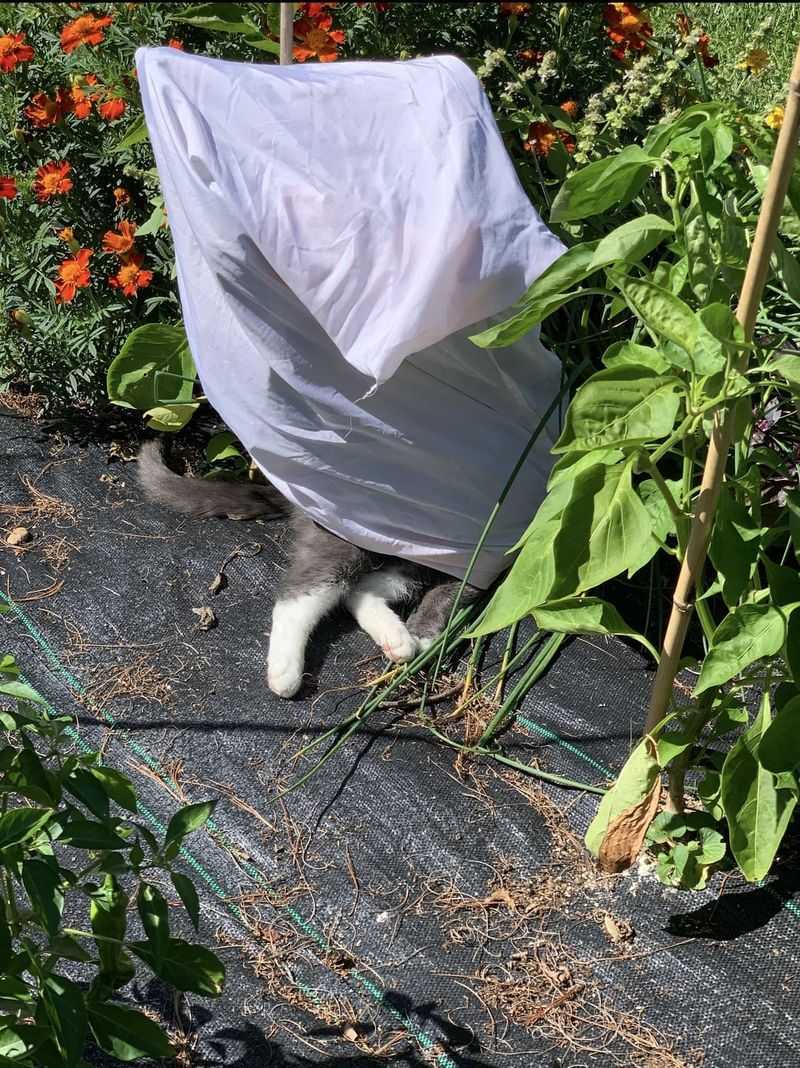Florida’s warm autumn days give pepper plants a great chance to flourish before winter. With a little extra care, your peppers can stay healthy and productive well into the season.
Simple adjustments can make a big difference in your harvest. Florida gardeners will find these 10 tips perfect for fall care.
1. Adjust Watering Schedules
Cooler fall weather means your pepper plants won’t drink as much water as they did during summer. In Florida, you’ll want to check soil moisture before watering instead of following a rigid schedule.
Stick your finger two inches deep into the soil. If it feels dry, water deeply until it drains from the bottom. Overwatering becomes a bigger risk in fall.
2. Fertilize Strategically
Your pepper plants still need nutrients during fall, but not as heavily as summer. Switch to a balanced fertilizer with equal nitrogen, phosphorus, and potassium ratios.
Feed your plants every three to four weeks in Florida’s mild autumn climate. This keeps them productive without encouraging excessive leafy growth. Too much nitrogen can reduce pepper production significantly.
3. Monitor for Pests
Fall brings aphids, whiteflies, and caterpillars that love munching on pepper plants. Check the undersides of leaves regularly for tiny invaders or their eggs.
Florida’s warm autumn keeps bugs active longer than northern states. Remove pests by hand or spray with neem oil for organic control. Early detection prevents major infestations from ruining your harvest.
4. Prune Damaged Growth
Summer storms and heat may have left your pepper plants looking scraggly. Trim away any yellowed, diseased, or broken branches to redirect energy toward healthy growth.
Use clean, sharp pruning shears to make precise cuts. In Florida, fall pruning encourages fresh foliage and more flowers. Don’t remove more than one-third of the plant at once though.
5. Provide Adequate Sunlight
Even though fall brings shorter days, pepper plants still crave six to eight hours of direct sunlight. Position containers where they’ll catch maximum morning and midday rays.
Florida’s autumn sun is less intense but still powerful enough for excellent growth. If you’re growing indoors, supplement with grow lights. Insufficient light leads to leggy plants and fewer peppers forming.
6. Mulch Around Plants
Adding a two to three inch layer of organic mulch helps regulate soil temperature and moisture. Use shredded leaves, straw, or wood chips around your pepper plants.
Florida’s fall can still have warm spells, and mulch keeps roots cool and protected. It also suppresses weeds that compete for nutrients. Keep mulch a few inches away from plant stems to prevent rot.
7. Support Heavy Branches
As your pepper plants produce more fruit in fall, branches can bend or snap under the weight. Install small stakes or cages to provide structural support.
In Florida, productive fall harvests mean you’ll need to act proactively. Tie branches gently with soft garden twine or cloth strips. Proper support prevents losing peppers to broken limbs and keeps plants looking tidy and organized.
8. Watch for Disease Signs
Cooler, damper fall mornings can create conditions for fungal diseases like powdery mildew or leaf spot. Inspect plants weekly for unusual discoloration or spots on foliage.
Florida’s humidity doesn’t disappear in autumn, making vigilance essential. Space plants properly for air circulation and water at soil level rather than overhead. Remove infected leaves immediately to stop spread.
9. Harvest Regularly
Picking peppers frequently signals plants to keep producing more fruit. Don’t wait for every pepper to reach full color before harvesting them.
Green peppers taste great and removing them encourages continued flowering in Florida’s extended growing season. Use clean scissors or pruners to cut peppers with a short stem attached. Regular harvesting maximizes your total yield throughout fall.
10. Prepare for Cold Snaps
While rare, Florida can experience unexpected cold fronts in late fall. Keep frost cloth or old sheets handy to cover pepper plants when temperatures drop below fifty degrees.
Container plants are easier to move indoors temporarily during cold spells. Even brief exposure to freezing temps can damage tender pepper foliage. Being prepared protects your investment and extends the harvest season considerably.

